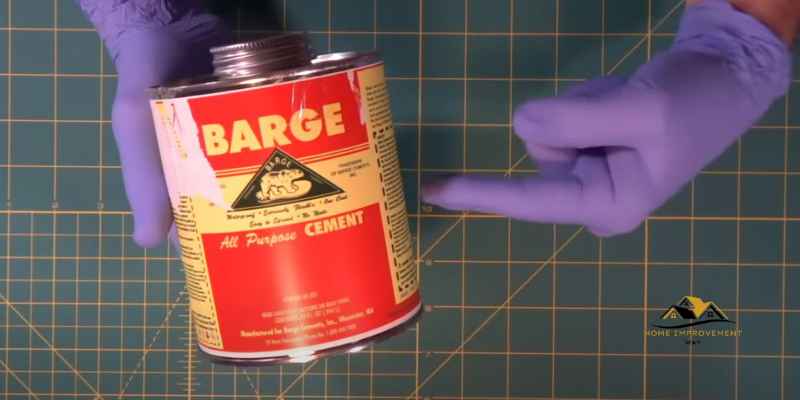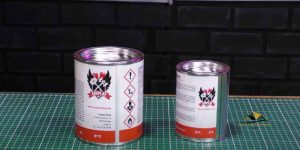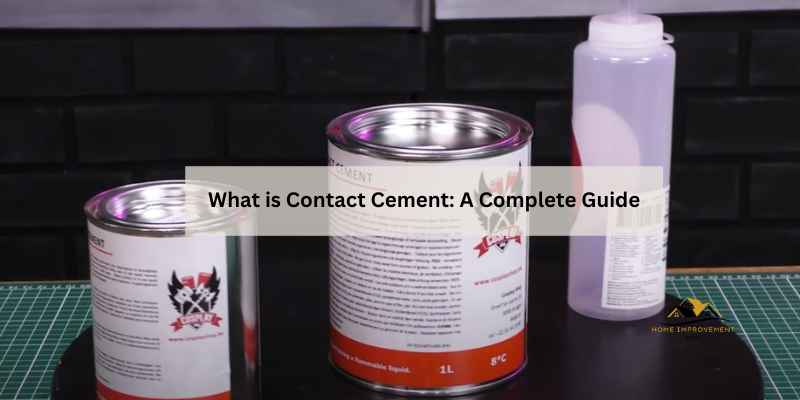Contact cement is a solvent-based adhesive used to bond materials like plastics, laminates, and metal or wood veneers. It creates a strong, permanent bond quickly.
Contact cement, also known as neoprene glue or impact glue, is a versatile adhesive that is commonly used in various DIY projects and industrial applications. This type of adhesive forms a strong and flexible bond between two surfaces, making it ideal for tasks that require a durable and long-lasting bond.
Whether you are working on woodworking projects, repairing furniture, or installing countertops, contact cement can be a reliable solution for your bonding needs. We will explore the uses, application, and benefits of contact cement to help you understand how this adhesive can be a valuable tool in your projects.
How Does Contact Cement Work?
Contact cement, also known as impact glue or neoprene glue, is a solvent-based adhesive used to bond materials such as plastics, laminates, and wood veneers. It is a universal general purpose cement that can bond a variety of substrates to one another, including wood, leather, and metal.
When applied, contact cement creates a strong, permanent bond that is resistant to water and heat.
Adhesive Properties
Contact cement is a type of solvent-based adhesive known for its strong bonding properties. It is commonly used to bond materials such as plastics, laminates, metal, or wood veneers. This adhesive exhibits excellent adhesion to various substrates, making it a versatile choice for many applications.
Bonding Process
When using contact cement, the bonding process involves applying a thin, even coat of the adhesive to both surfaces to be bonded. The adhesive is then allowed to dry until it becomes tacky to the touch. Once the surfaces are brought into contact, a strong and permanent bond is formed, creating a durable connection between the materials.
Types Of Contact Cement
Contact cement, also known as neoprene glue, is a solvent-based adhesive used for bonding materials like plastics, laminates, and wood veneers. Ideal for various applications due to its strong and long-lasting bond.
Solvent-based Contact Cement
Solvent-based contact cement is a type of adhesive that forms a strong bond between materials like plastics, laminates, and wood veneers. It contains volatile organic compounds (VOCs) that evaporate during the drying process, creating a durable bond.
Water-based Contact Cement
Water-based contact cement is an alternative to solvent-based adhesives, offering a more environmentally friendly option. It uses water as a carrier instead of solvents, making it easier to clean up and reducing the emission of harmful chemicals.
Application Techniques
Contact cement, also known as impact glue or neoprene glue, is a solvent-based adhesive used for bonding various materials like plastics, laminates, metal, or wood veneers.
Applying A Thin Coat
- Ensure surface is clean and dry
- Use a brush or roller to apply a thin, even coat
- Avoid puddles or thick layers
Drying And Bonding Process
- Allow the cement to dry until it is tacky to the touch
- Press the surfaces together firmly
- Apply pressure evenly for a strong bond
Advantages Of Contact Cement
Permanent Bonding
One of the significant advantages of contact cement is its ability to create a permanent bond between materials. When applied correctly, contact cement forms a strong, durable bond that can withstand various environmental conditions and heavy use. This feature makes it an ideal choice for projects requiring long-lasting and reliable adhesion.
Quick And Flexible Application
Contact cement offers the advantage of quick and flexible application. Its unique formulation allows for immediate bonding upon contact, eliminating the need for clamping or extended drying time. This characteristic makes it a convenient choice for projects that require efficiency and precision, as it allows for swift assembly and manipulation of materials.
Common Uses Of Contact Cement

Contact cement, also known as impact glue or neoprene glue, is a solvent-based adhesive used to bond various materials like plastics, laminates, and wood veneers. One of the key advantages of contact cement is its ability to create strong and durable bonds that are resistant to moisture and heat.
Bonding Wood Veneers
- Contact cement is commonly used for bonding wood veneers to substrates like plywood or particleboard.
- It provides a strong and permanent bond that is essential for woodworking projects.
Attaching Decorative Laminates
- Decorative laminates can be easily attached to surfaces using contact cement.
- It ensures a secure bond that can withstand daily wear and tear.
Difference Between Contact Cement And Other Adhesives
Contact cement is a type of solvent-based adhesive that is commonly used to bond materials like plastics, laminates, and wood veneers. Unlike other adhesives, contact cement forms an instant bond when the two surfaces coated with the cement come into contact with each other. Let’s explore the differences between contact cement and other popular adhesives.
Comparing Contact Cement With Super Glue
Super glue, also known as cyanoacrylate adhesive, is a fast-acting adhesive that forms a strong bond between surfaces. However, unlike contact cement, which requires both surfaces to be coated and then pressed together to create a bond, super glue bonds surfaces instantly upon contact. Additionally, super glue is not suitable for use on large surface areas, making it less versatile than contact cement.
Contrasting Contact Cement With Epoxy
Epoxy is a two-part adhesive that consists of a resin and a hardener. When mixed together, epoxy creates a strong and durable bond. In contrast to contact cement, which forms an immediate bond upon contact, epoxy requires a curing time to reach its maximum strength. Epoxy is often used for bonding materials that need a high level of structural support, while contact cement is more suitable for bonding large surface areas with a flexible bond.
Safety Measures And Best Practices
Contact cement, also referred to as impact glue or neoprene glue, is a solvent-based adhesive used to bond materials like plastics, laminates, and metal or wood veneers. It is a versatile adhesive with various applications, making it a popular choice for many DIY projects and professional uses.
Ventilation And Inhalation Precautions
When using contact cement, proper ventilation is essential to prevent inhalation of harmful fumes. Work in a well-ventilated area or use exhaust fans to remove fumes. Additionally, wearing a respirator or mask is highly recommended to avoid inhaling the strong adhesive fumes, which can cause respiratory irritation.
Proper Storage And Handling
Storing contact cement in a cool, dry place away from direct sunlight and sources of heat is crucial to maintain its effectiveness. Ensure the lid is tightly sealed to prevent evaporation and drying out of the adhesive. When handling the cement, use gloves to avoid skin contact and always keep it away from open flames or ignition sources due to its flammable nature.

Frequently Asked Questions
What Do You Use Contact Cement For?
Contact cement, also known as impact glue, is a type of solvent-based adhesive used to bond materials such as plastics, laminates, metal or wood veneers, and leather. It provides a permanent, quick, and flexible bond. It is widely used for bonding decorative laminates to substrates and can be used for various substrates such as wood, metal, and leather.
Unlike super glue, it cures by evaporation, making it a non-reactive adhesive.
What Is The Difference Between Contact Cement And Glue?
Contact cement is a type of solvent-based adhesive used to bond materials, such as plastics, laminates, and wood veneers. Glue is a more general term for various types of adhesives.
Are Rubber Cement And Contact Cement The Same Thing?
Yes, rubber cement and contact cement are different. Rubber cement makes a temporary bond, while contact cement creates a permanent, flexible bond.
Is Contact Cement Like Super Glue?
Contact cement and super glue are different. Super glue is a reactive adhesive, while contact cement cures by evaporation.
Conclusion
Contact cement is a versatile and strong adhesive that bonds a variety of materials such as wood, leather, metal, and plastics. It works by creating an instant permanent bond when two coated surfaces are brought into firm contact. Its neoprene rubber adhesive makes it quick and flexible, making it ideal for a variety of applications.
Whether you’re a DIY enthusiast or a professional, contact cement is a must-have in your toolbox. With its ease of use and strength, it’s no wonder that contact cement is a go-to adhesive for many.


